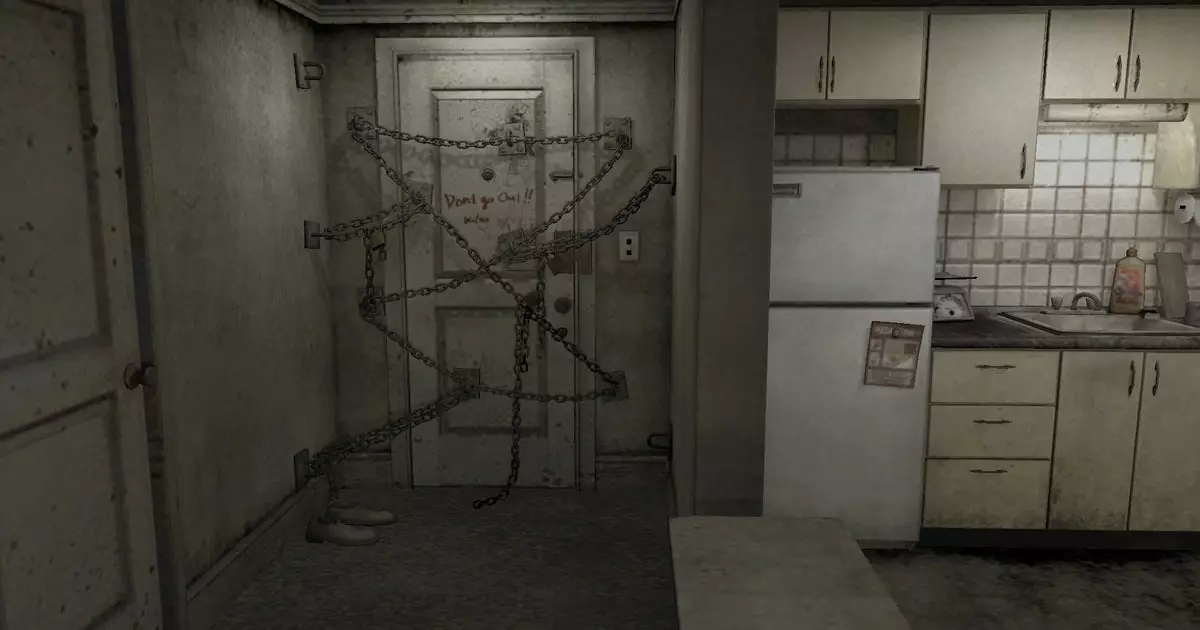Silent Hill 4: The Room is one of those titles that, despite the love-hate relationship it fosters among gamers, whispers its haunting allure in the ears of those brave enough to delve into its eerie narrative. Released in 2004, this installment marked a significant deviation from the established mechanics and storytelling of its predecessors, which bewildered many fans at the time. However, it is precisely this divergence that permits Silent Hill 4 to possess a unique charm that earns it a special place in the hearts of a dedicated fanbase—myself included.
What sparked my fascination with Silent Hill 4 was the exploration of its narrative through various psychological horrors and surreal elements. Unlike the familiar pattern of roaming dark streets and fog-laden environments, the game introduces a different local: a seemingly safe apartment that becomes a conduit for terror. This clever juxtaposition of safety and unease engages players in a psychological puzzle that challenges their every assumption. To dismiss this game simply based on personal inclination or critical reviews is to negate the artistry and emotional depth embedded within its corridors.
The Apartment: A False Sanctuary
At first glance, the protagonist Henry Townshend’s apartment acts as a refuge amidst the chaos, embodying the concept of a home—a place where one should feel secure. Yet, this false sense of security transforms the apartment into a breeding ground for dread. The transitions from the sanctuary to the nightmarish worlds beyond the walls invite players to question their perceptions of safety and the very nature of home.
The hauntings experienced in the apartment—such as windows rattling, spectral apparitions, and unsettling surprises like finding a dead cat in the fridge—are brilliantly conceived. The psychological games at play infuse a feeling of helplessness that resonates deeply with the themes of isolation and fear. It successfully keeps you on edge: when you think you are safe, the game quickly informs you otherwise. The genius lies not only in the events themselves but in the atmosphere that permeates the entire experience.
What had long plagued the PC version of Silent Hill 4 was the omission of various haunting effects that were available on consoles, leaving players with a watered-down interpretation of the game’s disturbing ambiance. Thankfully, GOG’s Preservation Program has rectified this by reintroducing these elements, showing a dedication to ensuring that the integrity of the original vision is maintained. Access to these ghostly remnants elevates the experience, making the revisited version well worth engaging with.
Modern Enhancements for Timeless Horror
The re-release of Silent Hill 4 on GOG brings with it more than just a revival of chilling hauntings; it also optimizes the game for contemporary gaming hardware. The enhancements allow the game to breathe anew, giving it life beyond merely being a nostalgia trip for older audiences. With modern controller support, you can indulge in this horror experience with your DualSense or other up-to-date peripherals, enabling a seamless connection to the gameplay that enhances immersion.
While significant hubbub surrounds remakes and new entries in the Silent Hill franchise, there’s an underappreciated magic in revisiting the lesser-discussed episodes of the saga. Silent Hill 4, despite being unconventional, has much to offer. It stands apart, not simply as a ghostly shadow cast by its acclaimed predecessors, but as an independent narrative exploring themes of companionship and emotional resonance.
The Heart of the Haunting
Of particular note is the character of Eileen Galvin, a companion character who adds a dimension of humanity often overlooked in survival horror games. Her optimistic quip, “Considering the circumstances, I guess we’re doing pretty good, huh,” emerges as an optimistic comment that underscores their shared ordeal. In a genre overwhelmingly characterized by despair, Eileen introduces moments of levity and connection. Through her, the game encourages players to forge human connections amidst suffering and horror.
While the second half of the game takes on the form of; what some might classify as an ‘escort mission,’ it sheds light on the significance of teamwork amidst eerie environments. Eileen isn’t merely a tag-along character; she’s a symbol of hope, reminding players that in the darkest times, we can find strength in companionship.
Ultimately, Silent Hill 4: The Room has evolved into an insightful reflection on human fears and relationships, perfectly capturing the essence of psychological horror. For those brave enough to traverse its haunting depths, it promises an experience that transcends traditional game design, offering a journey into the labyrinth of the mind that is simply unforgettable.


Leave a Reply